A while back, I tested a group of medium telephoto lenses on the Sony a7II. The lenses in the last test were:
- Zeiss 85mm f/4 ZM (Leica M mount) Tele-Tessar.
- Zeiss 85mm f/1.4 Otus.
- Leica 90mm f/2 Apo Summicron-M ASPH.
- AF-S Nikkor 85mm f/1.4 G.
- Tamron SP AF Di 90mm f/2.8 Macro.
The Otus and the ‘cron came out on top, with the little Zeiss Tele-Tessar getting the honorable mention award for its small size, low price, and excellent performance.
Today, I’m going to start posting the results of a new medium tele test. This one uses the a7RII body, so it will be a little harder on the lenses. The lenses are:
- Zeiss 85mm f/1,8 Batis.
- Zeiss 85mm f/1.4 Otus.
- Leica 90mm f/2 Apo Summicron-M ASPH.
- AF-S Nikkor 85mm f/1.4 G.
- Sony 90mm f/2.8 FE Macro.
The best way to navigate to the various portions of this test is to scroll to the bottom of this page — below the comments — and click on the pingbacks whose titles interest you.
I’m not going to use the scene where the camera is cocked so that the horizon runs from corner to corner. Some people have complained that it makes them queasy, and it’s not much of an advantage with lenses as long as the ones in this test.
The scene with the Batis at f/8:
And with the Sony 90mm macro lens:
I’ll show center and upper right corner crops at 300%, which is pretty intense magnification, especially considering the a7RII pixel pitch, but this way I’m sure that small differences will survive JPEG compression. I focused on the center and corner separately so as not to penalize the lenses for field curvature. I only focused wide open, though, so lenses that have significant focus shift upon stopping down will show the effects of that deficiency.
Tripod was a RRS carbon fiber one from their heaviest series. Head was the Arca Swiss Cube. I used a 5-second self timer delay. I also used EFCS, which will darken the upper part of the image at high shutter speeds and wide apertures, but I didn’t want to risk shutter shock at the lower shutter speeds. The images were all developed in Lightroom with default settings, except for using Daylight for the white point, and some corner exposure moves that I’ll explain as I go.
This post will deal with the f/1.4 images from the two lenses that can open that wide.
The center crops:

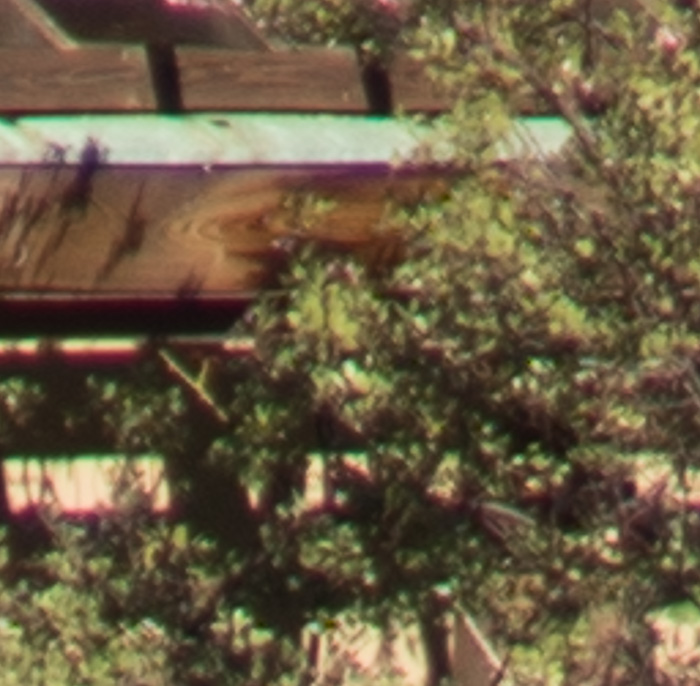
The Otus rendering is far superior. Crisper. More contrasty. More believable. And missing that really ugly green and magenta fringing around the light part of the house on the mid-lower part of the left hand side and the green at the top of the piece of copper flashing above that. The Nikkor show less obvious color fringing throughout the foliage. This could be longitudinal chromatic aberration (LoCA).
The corner:
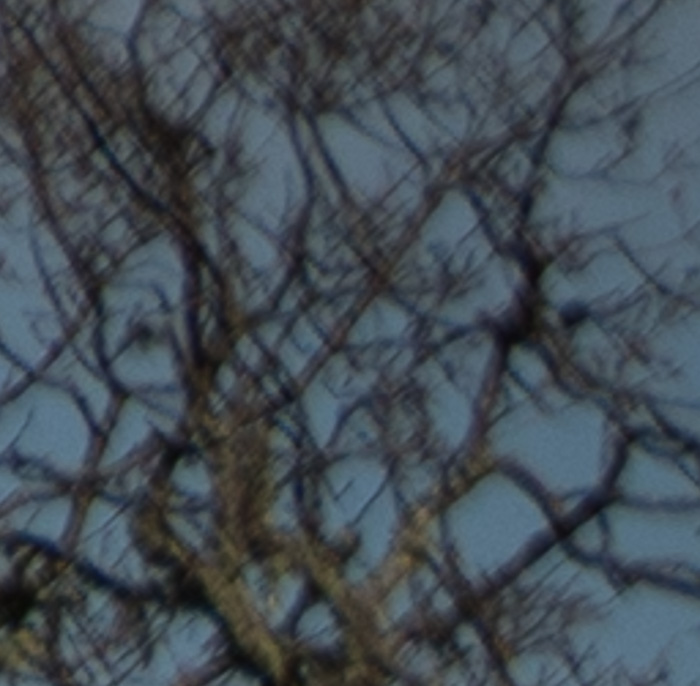
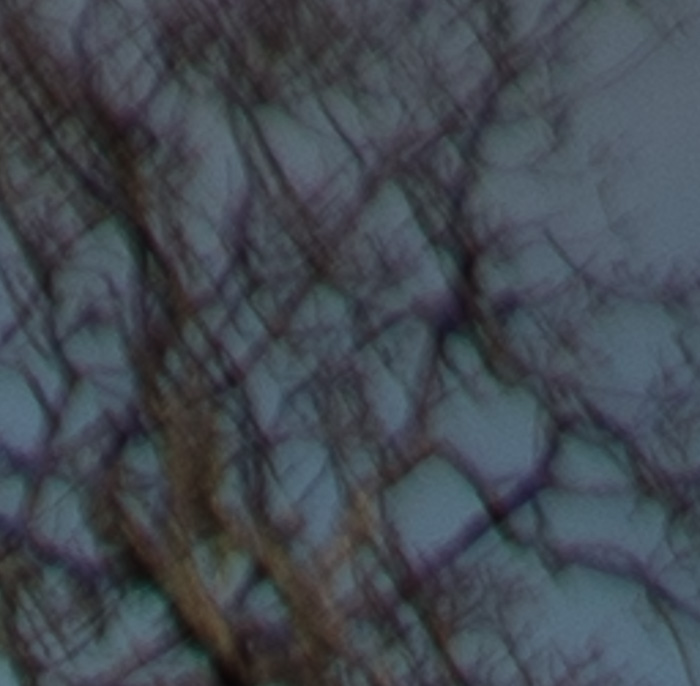
They’re both pretty dark because of the corner falloff that seems inevitable with such fast lenses, plus the EFCS being operated where you’d not normally use it. I will probably have to go back and double check the f/1.4 exposures with the mechanical shutter.
For now, I’ll give them both a two stop exposure boost:
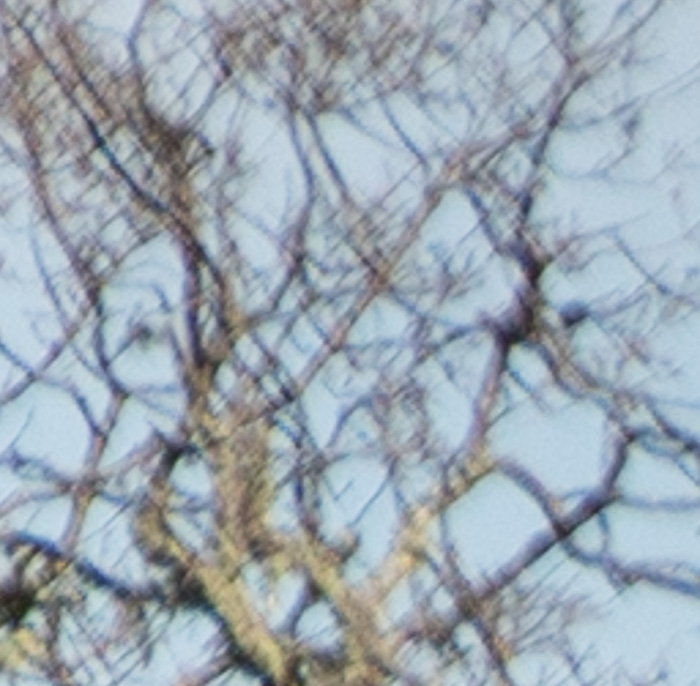
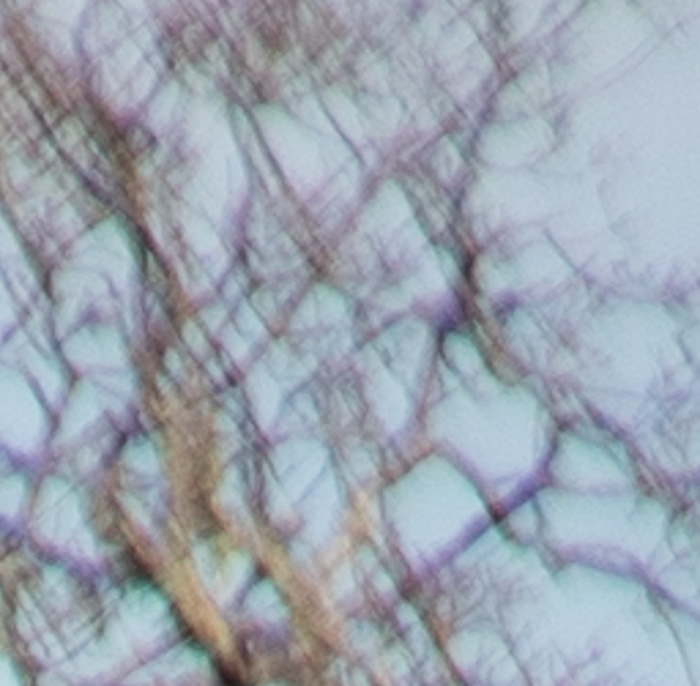
The Otus doesn’t have nearly the contrast that it has in the center, but it’s really a pretty spectacular performance. The Nikkor is just plain soft, and suffers from purple fringing that could be LoCA. It’s not lateral chromatic aberration (LaCA), since that would occur mostly on tangential branches, not radial ones.

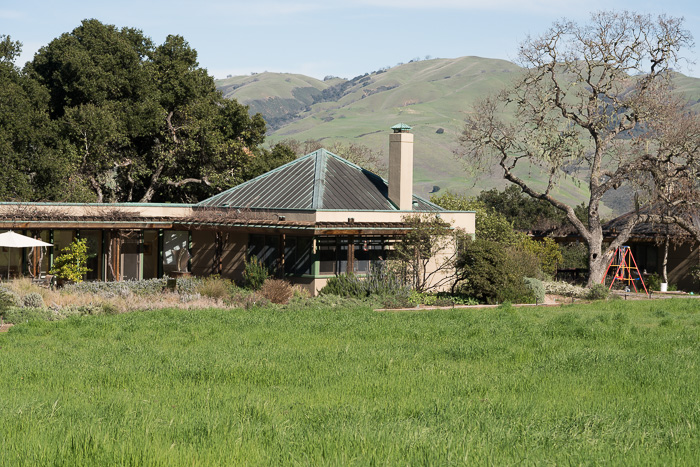
Bob says
The angry photographer is not going to be happy when he hears your comments about the otis. I look forward to his reply about the chromatic aberration. It is an interesting video of his and you might want to check out his youtube and offer an objective counter argument :). In short, he claims that chromatic aberration is the lens rendering things correctly and if you use 3D glasses, the photograph will “pop”. I don’t believe the lens renderings things correctly as you can photograph writing and you’ll get chromatic aberration. I believe it’s just different light frequencies travelling at different speeds. I would like to hear your thoughts.